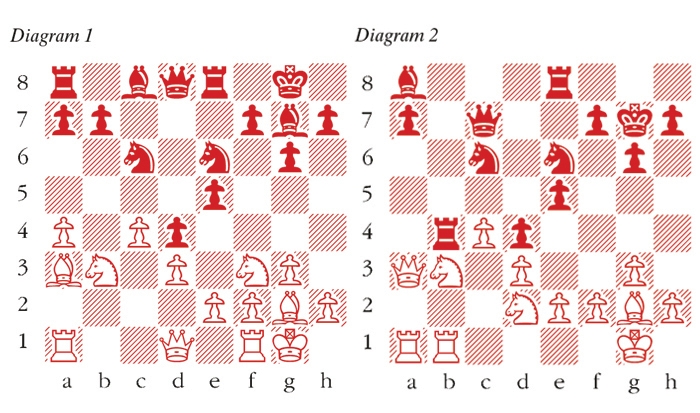The former world champion Vladimir Kramnik recently espoused an opening system which I elaborated in a tournament in Germany in 1975. Remarkably, in the first two rounds of the Mannheim competition, both of my opponents defended identically, and both were eventually ground down in simplified positions. Kramnik used the same method to defeat grandmaster Peter Svidler, the seven-times Russian champion, in the recently concluded Russian Team Championship. A position from Kramnik’s victory forms the topic of this week’s puzzle.
Keene-Reichenbach: Mannheim 1975; Reti Opening
1 Nf3 d5 2 b3 Nf6 3 Bb2 g6 4 g3 The double fianchetto is the hallmark of this variation. 4 … Bg7 5 Bg2 0-0 6 0-0 c5 7 c4 d4 8 b4 This is necessary before Black builds up a powerful centre with moves such as … Nc6 and … e5 when White’s dark-squared bishop runs the danger of being permanently locked out of play. 8 … Nfd7 9 bxc5 The game Keene-Mallee, Mannheim 1975 saw instead 9 a3 e5 10 d3 Nc6 11 Nbd2 where White was also successful. 9 … Nxc5 10 d3 Nc6 11 Nbd2 Re8 The Kramnik-Svidler game diverged here with 11 … Rb8 12 Ba3 Qa5. 12 a4 e5 13 Nb3 Ne6 14 Ba3 (see diagram 1). The point of White’s play has been to activate the dark-squared bishop and create potential pressure against Black’s queenside pawns which can be attacked both via the open b-file and from White’s long-ranging bishop on g2. 14 … Rb8 15 Nfd2 Bf8 16 Bxf8 Kxf8 17 a5 Nb4 18 Qc1 Kg7 19 Qb2 Nc6 Black goes into passive mode. His knight on b4 is well-placed and there was no necessity to withdraw it. Reinforcing the knight with 19 … Qe7 would be better. 20 a6 After this essential thrust Black’s queenside is in permanent danger of collapse. 20 … Qc7 21 axb7 Bxb7 22 Qa3 Ba8 23 Rfb1 Rb4 (see diagram 2). Setting a rather transparent trap. Of course now 24 Bxc6 Qxc6 25 Qxb4 fails to either 25 … Qg2 or 25 … Qh1 checkmate. 24 Bd5 Qe7 25 Na5 Rxb1+ 26 Nxb1 Qxa3 27 Rxa3 Nxa5 Submitting meekly to his fate. He should once again exploit his control of b4 by playing 27 … Nb4. 28 Rxa5 Bxd5 29 cxd5 Nf8 30 Rxa7 Rd8 31 Ra5 Nd7 32 Nd2 Nb6 33 Nc4 Nxd5 34 Nxe5 Nc3 35 Ra7 Kf6 36 f4 Rb8 A terrible blunder but he is losing anyway after 36 … Nxe2+ 37 Kf2 Nc1 38 Rxf7+. 37 Nd7+ Black resigns
There are some odd opening moves in chess, such as 1a3 and 1g4. Perhaps the weirdest of all is 1h4, the topic of a new book called Shuffleduck, by Ken Norbury. Next week I shall be delving into the mysteries of this strangest of all ways to make the first move on the chessboard.





Comments